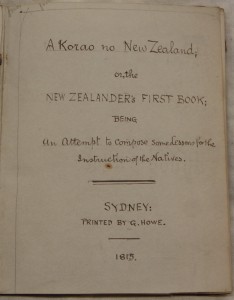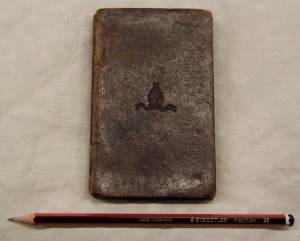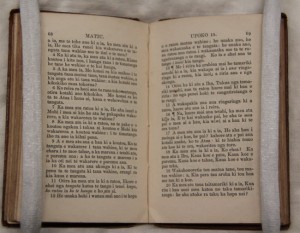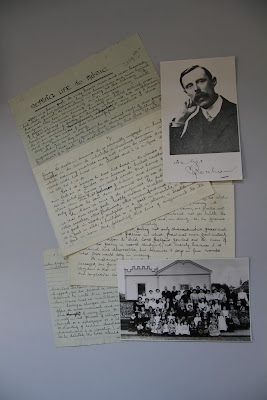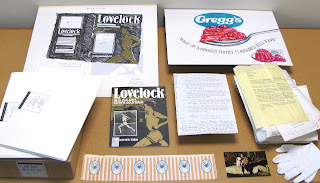Post prepared by Jacinta Beckwith, Liaison Librarian
Hocken Collections has the privilege of caring for a collection of early printed Māori material known as the Williams collection. The collection is named after Herbert William Williams (1860-1937), sixth Anglican Bishop of Waiapu. His father William Leonard Williams (1829-1916) and grandfather William Williams (1800-1878) were also bishops of the Waiapu area and all three were linguists and scholars of Māori language.
In 1924 Herbert Williams wrote A Bibliography of printed Maori to 1900 which lists and describes more than a thousand Māori print items published prior to 1900, and from this we get the Williams numbers. The criterion for the list was: “any work, however small, printed wholly in Maori or in Maori with a translation, has been admitted ; so also any work dealing wholly with the Maori language –as, for example, a dictionary.”
The first book of the collection is the first known book published in Māori, A Korao no New Zealand; or, the New Zealander’s First Book Being an Attempt to compose some Lessons for the Instruction of the Natives’. This was compiled by Thomas Kendall (ca.1778-1832) a school teacher based at Rangihoua in the Bay of Islands, with help from local Maori. Mr Kendall had it printed in 1815 at Sydney and used it in his school.
PIC 1: Title page of A Korao no New Zealand; or, the New Zealander’s first book; being an attempt to compose some lessons for the instruction of the natives. Williams Collection 0001, Hocken Collections
PIC 2: Pages from A Korao no New Zealand
Hocken’s copy of Kendall’s book was meticulously hand-copied from the only original surviving text held at the Auckland Museum Library by John Kenderdine (1860-1932) and later presented to Dr Hocken by Mr Kenderdine’s wife. It also bears an inscription: From Mr J King, First missionary to New Zealand to G A Selwyn Paihia, Bay of Islands and given by him to me at Port Macquarie New South Wales in June 1859. John King (1789-1854) was a shoemaker from Oxfordshire who lived in Parramatta prior to arriving in New Zealand as a missionary with Samuel Marsden. George Augustus Selwyn (1809-1878), also an Englishman, was the first Anglican Bishop of New Zealand and Melanesia. Letters and journals of both Mr King and Bishop Selwyn are held at Hocken.
A second item in the Williams Collection with connection to Bishop Selwyn is a small edition of the Gospel of St Matthew: Ko te rongo pai ki te ritenga o Matiu. This was printed in London in 1841 by the Society for Promoting Christian Knowledge (SPCK) and brought out to New Zealand by Bishop Selwyn for distribution. A bishop’s mitre is embossed on the front cover.
PIC 3: Ko te rongo pai ki te ritenga o Matiu. Williams Collection 0065, Hocken Collections
PIC 4: Pages from Ko te rongo pai ki te ritenga o Matiu
At this time the predominant written material available for Maori to read aside newspapers and other written ephemera left by European visitors were scriptures in Māori. Hocken’s Williams collection currently comprises just over two hundred items and many of these are religious texts: scripture, prayer books, hymns and prayers books. The collection also comprises Māori newspapers and gazettes, letters of correspondence, translations of literature, lessons in money matters and medicinal remedy recipes. The collection provides a glimpse into life and communication between early missionaries and local Māori and demonstrates early European effort in learning the indigenous language.


